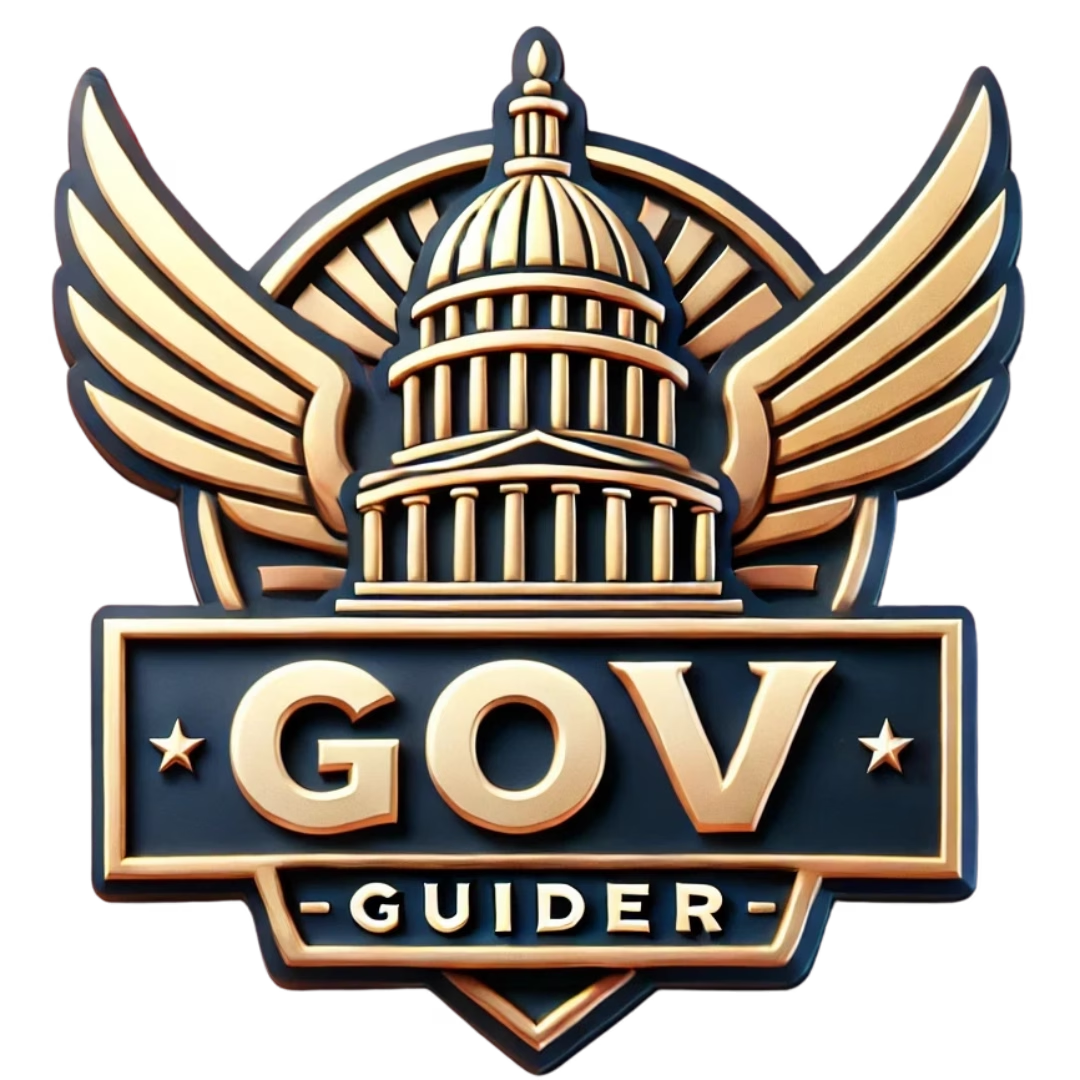Key Takeaways
- Understanding federal loan programs is essential for students seeking financial aid for education.
- Direct Subsidized Loans offer interest-free periods while enrolled, making them ideal for financially needy undergraduate students.
- Direct Unsubsidized Loans are available to all students and accrue interest during school, impacting long-term costs.
- The $5,500 federal loan limit provides crucial funding for first-year undergraduates, promoting educational accessibility.
- Monthly payments on a $70,000 student loan can vary based on interest rates and repayment plans, emphasizing the need for careful financial planning.
- Eligibility for federal loans is determined by factors like financial need and enrollment status, making the FAFSA crucial.
- Federal student loan forgiveness programs can alleviate debt burdens, especially for those in public service roles.
- Choosing the right federal loan type can significantly impact your financial future and repayment options.
In today’s financial landscape, understanding federal loan programs is crucial for students seeking higher education. These programs not only provide essential funding but also play a significant role in shaping the financial futures of countless individuals. In this article, we will explore the various types of federal loans available, including the critical differences between subsidized and unsubsidized options. Additionally, we will delve into practical aspects such as monthly payment calculations for a $70,000 student loan and the implications of the $5,500 federal loan limit. Understanding eligibility criteria is vital, and we will guide you through the application process for federal student loans. Finally, we will evaluate which federal loan type might be the best fit for your needs and discuss the impact of student loan forgiveness programs on these loans. Join us as we navigate the complexities of federal loan programs, providing you with valuable insights and strategies to make informed financial decisions.
What are federal loan programs?
Overview of Federal Loan Programs
Federal loan programs are essential financial resources designed to assist students in funding their education. These loans, primarily offered through the U.S. Department of Education, provide a means for students to cover tuition, fees, and other educational expenses. Understanding the various types of federal loans is crucial for making informed decisions about financing your education. Federal student loans typically come with lower interest rates and more flexible repayment options compared to private loans, making them a preferred choice for many students.
Importance of Federal Student Loans for Financial Aid
Federal student loans play a vital role in the financial aid landscape, providing substantial value to students who may not have the means to pay for college upfront. These loans help bridge the gap between the cost of education and the financial resources available to students and their families. By offering favorable terms, such as income-driven repayment plans and potential loan forgiveness options, federal loans enhance accessibility to higher education. Moreover, they contribute to improved educational outcomes by enabling more students to pursue degrees and certifications that can lead to better job opportunities and increased earning potential.
What are the four types of federal loans?
Understanding the different types of federal loan programs is crucial for students seeking financial aid. Federal student loans are designed to help cover the cost of education, and they come in various forms to meet diverse needs. Here’s a breakdown of the four primary types of federal loans available to college students.
Breakdown of Federal Loan Programs for College Students
The four main types of federal loans include:
- Direct Subsidized Loans: These loans are available to undergraduate students with demonstrated financial need. The government pays the interest while the student is in school at least half-time, during the grace period, and during deferment periods.
- Direct Unsubsidized Loans: Unlike subsidized loans, these are available to both undergraduate and graduate students regardless of financial need. Interest accrues during all periods, including while the student is in school.
- Direct PLUS Loans: These loans are available to graduate or professional students and parents of dependent undergraduate students. They require a credit check, and interest rates are generally higher than those for subsidized and unsubsidized loans.
- Direct Consolidation Loans: This option allows borrowers to combine multiple federal loans into a single loan with a fixed interest rate. This can simplify repayment and potentially lower monthly payments.
Each type of loan has its own eligibility criteria, interest rates, and repayment options, making it essential for students to understand their choices. For more detailed information on federal loan programs, visit the official U.S. government website.
Comparison of Federal Loan Types: Subsidized vs. Unsubsidized
When considering federal loans, it’s important to understand the key differences between subsidized and unsubsidized loans:
- Interest Payments: Subsidized loans do not accrue interest while the borrower is in school, whereas unsubsidized loans start accruing interest immediately.
- Eligibility: Subsidized loans are based on financial need, while unsubsidized loans are available to all students regardless of financial circumstances.
- Loan Limits: The amount a student can borrow may differ between the two types, with subsidized loans typically having lower limits.
Choosing the right type of federal loan can significantly impact a student’s financial future. For further guidance on federal support eligibility, check out our essential guide to federal support eligibility.
How much would a $70,000 student loan be monthly?
When considering a federal loan program, understanding the monthly payment for a $70,000 student loan is essential for effective financial planning. The monthly payment can vary significantly based on the loan type, interest rate, and repayment plan chosen. Generally, federal student loans offer various repayment options, including standard, graduated, and income-driven repayment plans. Here’s a breakdown of how to calculate the monthly payments for a $70,000 federal student loan.
Monthly Payment Calculations for Federal Loans
To estimate the monthly payment for a $70,000 federal student loan, you can use the following formula:
- Loan Amount: $70,000
- Interest Rate: Varies by loan type (e.g., Direct Subsidized or Unsubsidized Loans)
- Loan Term: Typically 10 years for standard repayment
Using an average interest rate of 5% for federal loans, the monthly payment would be approximately $742. This calculation assumes a standard repayment plan. For income-driven repayment plans, the monthly payment could be lower, depending on your income and family size.
Factors Affecting Monthly Payments on Federal Student Loans
Several factors can influence the monthly payments on federal student loans:
- Interest Rates: Federal student loan interest rates are set annually and can affect overall payment amounts. It’s crucial to stay updated on current rates.
- Repayment Plans: Choosing between standard, graduated, or income-driven repayment plans can significantly impact monthly payments. Income-driven plans may offer lower payments based on your financial situation.
- Loan Type: Different federal loan programs have varying terms and conditions, which can affect payment amounts. For example, Direct PLUS Loans may have higher interest rates compared to Direct Subsidized Loans.
- Loan Forgiveness Programs: If you qualify for loan forgiveness, such as Public Service Loan Forgiveness, your monthly payment may be adjusted accordingly.
Understanding these factors can help you make informed decisions about managing your federal student loans effectively. For more detailed information on federal loan programs, visit the government funding programs page.
What is the $5500 student loan?
The $5,500 student loan typically refers to the maximum amount that undergraduate students can borrow through the Federal Direct Subsidized and Unsubsidized Loan programs for the academic year. This amount is part of the federal student aid system designed to help students cover the costs of their education. Understanding the specifics of this loan can help students make informed decisions about financing their education and managing their future debt responsibly.
Understanding the $5500 Federal Loan Limit
The $5,500 limit applies specifically to first-year undergraduate students. This amount increases for students in their second year and beyond, with a total borrowing limit of $31,000 for dependent undergraduates. The loans are divided into two categories:
- Subsidized Loans: Available to undergraduate students with demonstrated financial need. The government pays the interest while the student is in school at least half-time, during the grace period, and during deferment periods.
- Unsubsidized Loans: Available to all eligible students regardless of financial need. Interest accrues on these loans from the time they are disbursed, meaning students are responsible for paying the interest during all periods.
To qualify for a $5,500 student loan, students must complete the Free Application for Federal Student Aid (FAFSA). Eligibility is determined based on factors such as financial need, enrollment status, and the cost of attendance at the chosen institution. For more detailed information about federal student loans, including the $5,500 limit, students can visit the Federal Student Aid website, which provides comprehensive resources and guidance on managing student loans.
How the $5500 Loan Fits into Federal Loan Programs for Students
The $5,500 loan is a crucial component of federal loan programs, serving as a foundational financial resource for many students. It plays a significant role in the broader context of federal student loans, which aim to make higher education accessible. Here’s how it fits into the larger framework:
- Financial Aid Accessibility: The $5,500 limit ensures that students can access essential funds to cover tuition and other educational expenses, thereby reducing the financial burden of college.
- Loan Repayment Flexibility: Repayment of federal student loans typically begins six months after graduation, allowing students time to secure employment before starting to pay back their loans. This flexibility is vital for managing future debt.
- Interest Rates: As of the 2023-2024 academic year, the interest rate for federal student loans is fixed at 5.50% for both subsidized and unsubsidized loans, providing predictability in repayment.
By understanding the $5,500 federal loan limit and its implications, students can better navigate their financial options and make informed choices about their education funding. For additional resources on federal loan programs, consider exploring government funding programs and federal support eligibility.
Who is eligible for federal loans?
Eligibility for federal loans is determined by several key criteria. To qualify for federal student loans, applicants must meet the following requirements:
- Financial Need: For need-based aid, you must demonstrate financial need, which is typically assessed through the Free Application for Federal Student Aid (FAFSA).
- Citizenship Status: You must be a U.S. citizen or an eligible noncitizen. This includes permanent residents and certain other noncitizens who meet specific criteria.
- Enrollment Status: You must be enrolled at least half-time in an eligible degree or certificate program at an accredited college, university, or career/trade school. Programs must be recognized by the U.S. Department of Education.
- Satisfactory Academic Progress: You must maintain satisfactory academic progress as defined by your institution, which generally includes maintaining a minimum GPA and completing a certain percentage of attempted courses.
- No Default on Previous Loans: You must not be in default on any federal student loans or owe a refund on any federal grants.
- Age and Dependency Status: While there is no age limit for federal loans, dependent students may need to provide parental information on the FAFSA, while independent students do not.
For more detailed information on eligibility and the application process, you can visit the Federal Student Aid website, which provides comprehensive resources and guidance on federal loans and financial aid.
How to Apply for Federal Student Loans
Applying for federal student loans is a straightforward process that involves several key steps:
- Complete the FAFSA: The first step is to fill out the Free Application for Federal Student Aid (FAFSA). This form collects financial information to determine your eligibility for federal student loans and other types of financial aid.
- Review Your Student Aid Report (SAR): After submitting the FAFSA, you will receive a Student Aid Report that summarizes your information. Review it for accuracy and make any necessary corrections.
- Receive Your Financial Aid Offer: Once your FAFSA is processed, your school will send you a financial aid offer detailing the types and amounts of aid you are eligible for, including federal loans.
- Accept Your Loans: Decide which loans you want to accept. You may choose to accept the full amount or a portion of it based on your financial needs.
- Complete Entrance Counseling: If you are a first-time borrower, you must complete entrance counseling to understand your responsibilities regarding the loan.
- Sign the Master Promissory Note (MPN): Finally, you will need to sign the MPN, which is a legal document in which you agree to the terms of the loan.
For further assistance with the application process, you can explore resources on federal support eligibility or visit the official U.S. government website.
Which federal loan type is the best?
When considering which federal loan type is the best for college students, subsidized loans often emerge as the top choice due to their favorable terms. Here’s a detailed overview of the main federal loan types:
Evaluating the Best Federal Loan Options for Students
1. Subsidized Loans: These loans are designed for undergraduate students with demonstrated financial need. The key advantage is that the federal government covers the interest while you are enrolled at least half-time in college, during the grace period, and during any deferment periods. This can lead to significant savings over the life of the loan. According to the U.S. Department of Education, as of 2023, the interest rate for subsidized loans is fixed at 4.99%.
2. Unsubsidized Loans: Unlike subsidized loans, these are available to both undergraduate and graduate students regardless of financial need. However, interest accrues while you are in school, which can increase the total repayment amount. The current fixed interest rate for unsubsidized loans is also 4.99% for undergraduates and 6.54% for graduate students.
3. PLUS Loans: These loans are available for graduate students and parents of dependent undergraduate students. They require a credit check and have a higher interest rate of 7.54%. While they can cover the full cost of attendance minus any other financial aid, they may not be the best option due to the higher costs involved.
4. Direct Consolidation Loans: If you have multiple federal loans, consolidating them into a Direct Consolidation Loan can simplify repayment. However, it’s important to note that this may result in a longer repayment term and potentially higher interest costs.
In summary, for most undergraduate students, subsidized loans are typically the best option due to the government covering interest during key periods, making them more affordable in the long run. For more information on federal student loans and eligibility, you can visit the Federal Student Aid website, which provides comprehensive resources and guidance.
Tips for Choosing the Right Federal Loan Program
- Assess Your Financial Need: Determine whether you qualify for subsidized loans based on your financial situation. This can significantly impact your long-term repayment costs.
- Understand Loan Terms: Familiarize yourself with the interest rates and repayment terms of each loan type. This knowledge will help you make informed decisions.
- Consider Future Earnings: Research potential career earnings in your field of study. This can help you gauge how much debt you can manage after graduation.
- Utilize Resources: Take advantage of resources like government funding programs and federal support eligibility to explore all available options.
Student loan forgiveness and its impact on federal loans
Student loan forgiveness programs play a crucial role in alleviating the financial burden of federal student loans. These programs are designed to provide relief to borrowers who meet specific criteria, allowing them to have a portion or all of their loans forgiven after fulfilling certain obligations. Understanding these programs is essential for anyone navigating the complexities of federal loan repayment.
Overview of Student Loan Forgiveness Programs
There are several federal student loan forgiveness programs available, each with unique eligibility requirements and benefits. The most notable include:
- Public Service Loan Forgiveness (PSLF): This program forgives the remaining balance on Direct Loans after 120 qualifying monthly payments while working full-time for a qualifying employer, such as a government or nonprofit organization.
- Teacher Loan Forgiveness: Teachers who work in low-income schools or educational service agencies may qualify for forgiveness of up to $17,500 on their Direct Loans or Stafford Loans after five consecutive years of teaching.
- Income-Driven Repayment (IDR) Forgiveness: Borrowers enrolled in an IDR plan may have their remaining loan balance forgiven after 20 or 25 years of qualifying payments, depending on the plan.
These programs significantly impact federal loans by providing pathways for borrowers to reduce their debt burden, thereby enhancing their financial stability and encouraging public service careers.
How Federal Loan Programs Support Student Loan Forgiveness
Federal loan programs are integral to the success of student loan forgiveness initiatives. They offer various loan types, such as Direct Subsidized and Unsubsidized Loans, which are eligible for forgiveness under specific programs. The structure of these loans allows borrowers to take advantage of forgiveness options, particularly for those in public service roles.
Moreover, the U.S. Department of Education actively promotes awareness of these programs, ensuring that borrowers understand their options. This outreach is vital for maximizing participation and ensuring that eligible individuals can benefit from the relief offered by forgiveness programs. By supporting these initiatives, federal loan programs contribute to a more educated workforce and promote social equity.




